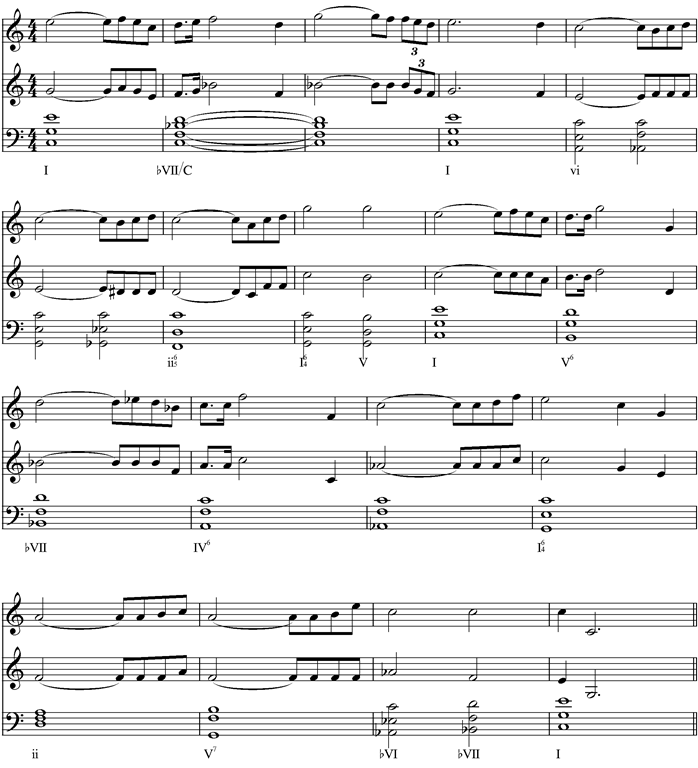This object is in two parts, but there is so much to discuss about the first part that I am splitting up into two posts.
As a refresher, here is what the object sounds like:
Now that you have that in your inner ear, lets dive into the music, shall we?
This object is full of interesting harmonic shifts. Right from the beginning, we notice the composers use of the bVII as a dominant substitution. There is also a presiding C pedal throughout the opening from Measure 1 through Measure 8, until the unmistakable dominant chord in measure 8 is heard.
Measures 5-7 present an interesting shift of harmonies through chromatic voice-leading. This motion connecting the a minor (vi) chord to the d minor-seventh (ii7) is accomplished through descending half step motion and one diatonic neighbor motion (C-D-C in m. 5-6). This allows for some harmonic instability while maintaining a good sense of voice leading and interest in this three-part object.
The final cadence of this excerpt is also interesting, and one which I will devote a future post to, but it is a very popular cadence in Mario music from the first game up through Mario Galaxy. This “Mario Cadence” consists of taking the Submediant and Subtonic chords from the parallel minor and cadence on a major tonic.
There are some distinctly classical elements to this object as well. The chromatic voice-leading from m. 5-8 embellish what is a textbook chord progression ending with a cadential six-four motion into an imperfect authentic cadence. This part of the object could be described as a contrasting period:
A: Measures 1-8
Ends in an Imperfect Authentic Cadence (melody ends on Mi, not Do)
B: Measures 9-18
2 Measure extension through sequencing. Ends in a Stronger Cadence than (A) since the soprano ends on Do. I would argue that the bVII serves as a convincing enough dominant substitution that this is infact a stronger cadence than the one before it.
Analysis of Part 2 of this object is forthcoming. There is a dramatic change in register and style. Also look forward to an examination of the “Mario Cadence” as well as some thoughts on Semiotics and Video Games.

No comments:
Post a Comment